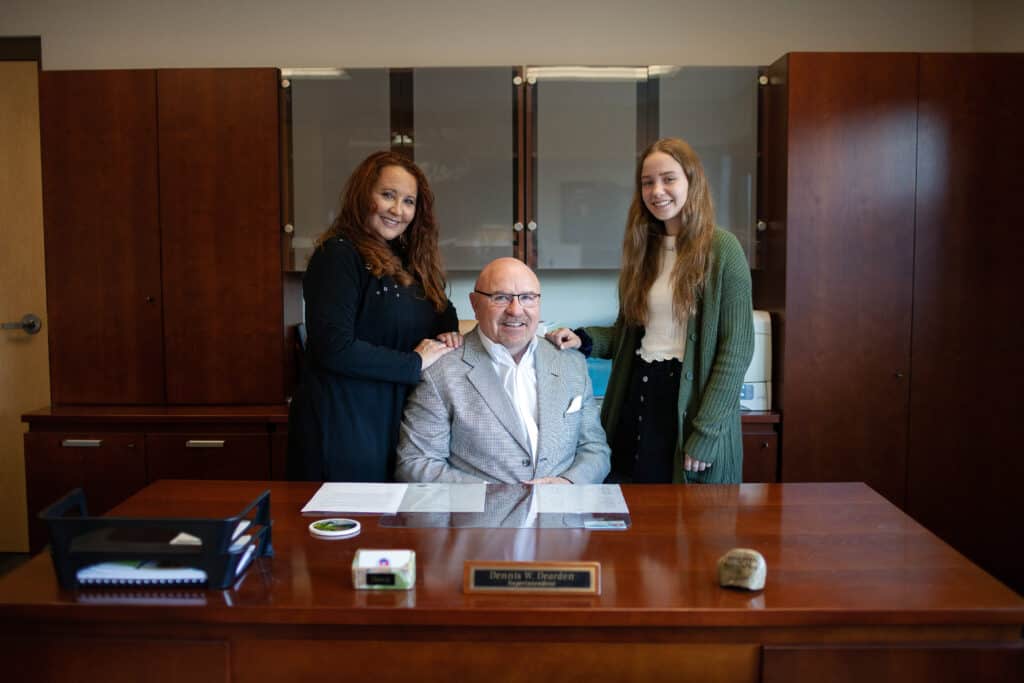Yavapai County is facing an exodus of educational heads with the departure of at least 10 superintendents across the county, including three here in the Verde Valley.
Clarkdale-Jerome School District Superintendent Danny Brown is retiring after six years in the post and 30 years in education.
Cottonwood-Oak Creek School District Superintendent Steve King, who served eight years in the post after 15 years as an administrator and principal at the Camp Verde Unified School District, is quitting to run for political office.
Yavapai County School Superintendent Tim Carter is retiring after 50 years in education, 18 of which he spent overseeing county school districts after he was appointed to the position in 2005 and reelected five times. Although largely independent, Carter’s primary role was in interviewing and appointing board members when public school districts had vacancies.
These three men plan to depart at the end of the school year in the early summer.
Locally, Sedona-Oak Creek School District Superintendent Dennis Dearden, who also served as principal of Sedona Red Rock High School until recently, plans to retire this year as well, but rather than leaving at the end of the school year like the others, he will stay on through the summer and the beginning of next school year and depart in September.

He has already handed off the SRRHS principal job to current Assistant Principal Heather Isom, who will start in the role at the beginning of Fiscal Year 2023-24.
During his five years in Sedona, Dearden managed to right the ship and stabilize a district that had been flailing for years.
Dearden’s immediate predecessor, David Lykins, had been hired internally without any real vetting and lacked the skills to effectively manage a district. The then-superintendent had no doctorate, telling us for years that he was enrolled in a Ph.D. program, but was cagey about the details, the advisor and the institution, so his claims could never be verified.
His lack of administrative skills showed when he made questionable decisions regarding staffing, policies, budgets and expenditures, replaced administrators who spent time in classrooms with those who sat behind desks and created an internal administrative culture that was not conducive to retaining teachers, dozens of whom quit to go to other districts or abandoned the teaching profession altogether. The board itself at the time was replete with infighting, accusations, recriminations and allegations, adding to the perception of chaos.
Overall declining student enrollment can’t really be blamed on a single inept leader or single bad policy, but rather on Sedona’s changing demographics, which means fewer and fewer children in general are living within SOCSD jurisdiction and making it harder to enroll students. With an increasing number of charter schools vying for those student dollars, more families choosing to homeschool and overall parent unhappiness with the district, SOCSD was in dire straits.
A new board in 2017 declined to discuss a new contract with Lykins, silently showing him the door, and he quietly resigned.
That was the environment into which Dearden was brought to salvage the situation, repair the district’s culture, fix the budget, stop the hemorrhage of students and teachers and rebuild the support and confidence parents and community members previously had in SOCSD.
Dearden has largely done so, halting the exodus of students and even increasing enrollment in part by enticing students from other parts of the Verde Valley to enroll in Sedona. Parents who experimented with alternative or charter schools were coaxed to bring their students back to SOCSD. Our schoolchildren need stability and support, which is what Dearden brought to SOCSD, and which has trickled down to the teachers.
While teacher turnover is what it is due to educational salaries in Arizona and national, social and political culture wars around public education, teachers by and large aren’t quitting as a result of problems with Sedona’s administration like they were in years past.
As Dearden departs, Governing Board is searching for his replacement and surveying the public about what they would like to see in the next superintendent.
Governing Board member April Payne stopped me this week while I was dropping off my daughter and asked me to share with readers the importance of finding out what members of the public want to see in SOCSD’s leader. Payne reiterated that the school board wants to do what’s best not just for students and families, but for the community at large. Hiring a good and trusted superintendent is vital to that process.
Dearden rescued SOCSD after years of mismanagement, but the process is not complete. Sedona still faces budget shortfalls due to state legislative politicking and a real risk of declining enrollment due to an aging population with fewer total children, fewer students from smaller families, and housing issues, which often preclude working families from finding rentals within the SOCSD jurisdiction.
Likewise, finding housing for newly-hired teachers also puts pressure on staffing classrooms, so a new superintendent will have to take into account how to house those good teachers he or she hires.
You can fill out the survey on the sedona.k12.az.us website.